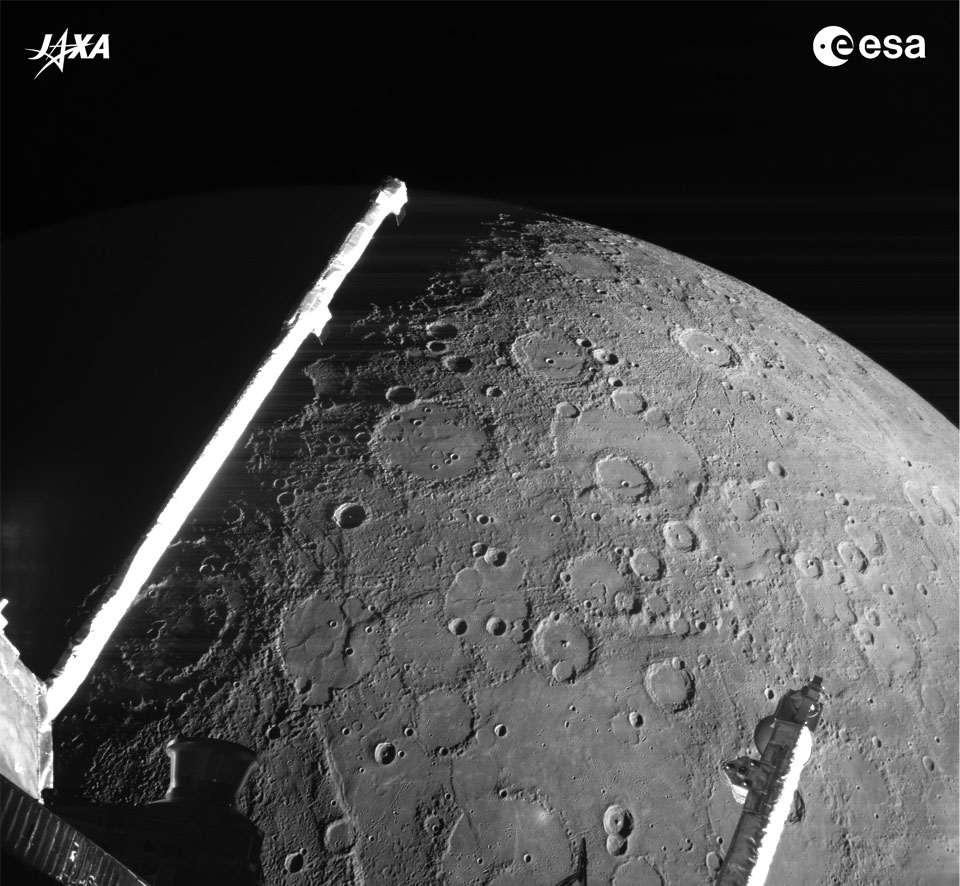2022年6月28日
Mercury from Passing BepiColombo
Image Credit & License: ESA, JAXA, BepiColombo, MTM
Explanation: Which part of the Moon is this? No part — because this is the planet Mercury. Mercury’s old surface is heavily cratered like that of Earth’s Moon. Mercury, while only slightly larger than Luna, is much denser and more massive than any Solar System moon because it is made mostly of iron. In fact, our Earth is the only planet more dense. Because Mercury rotates exactly three times for every two orbits around the Sun, and because Mercury’s orbit is so elliptical, visitors on Mercury could see the Sun rise, stop in the sky, go back toward the rising horizon, stop again, and then set quickly over the other horizon. From Earth, Mercury’s proximity to the Sun causes it to be visible only for a short time just after sunset or just before sunrise. The featured image was captured last week by ESA and JAXA’s passing BepiColombo spacecraft as it sheds energy and prepares to orbit the innermost planet starting in 2025.
Tomorrow’s picture: solar system family portrait
贝比科隆博号太掠过水星
影像提供与授权: ESA, JAXA, BepiColombo, MTM
说明: 这是月亮的那个区域?跟月亮无关,因为这是水星。水星古老的表面酷似月亮,都满布撞击坑。虽然水星只比月亮稍大,但因其主成分是铁,故密度和质量远胜于任何太阳系的卫星。事实上,我们的地球是太阳系里密度唯一高于水星的行星。因为水星在自转3圈的期间,恰好绕行太阳2圈,而且椭圆轨道极为扁长,水星的访客可见到太阳升起,停在天空,接着往先前升起的地平线回落,再停住,最后又很快速的落向另一侧的地平线。从地球看出去,因为水星很邻近太阳之故,只有在刚日落后或即将日出之前的短暂期间方得见。这幅主题影像,是由欧洲航天局及日本宇航研究开发机构的贝比科隆博号太空船,于上星期掠过水星、倾泄能量以期在2025年入轨这颗最内围行星时所拍摄。
明日的图片: solar system family portrait







